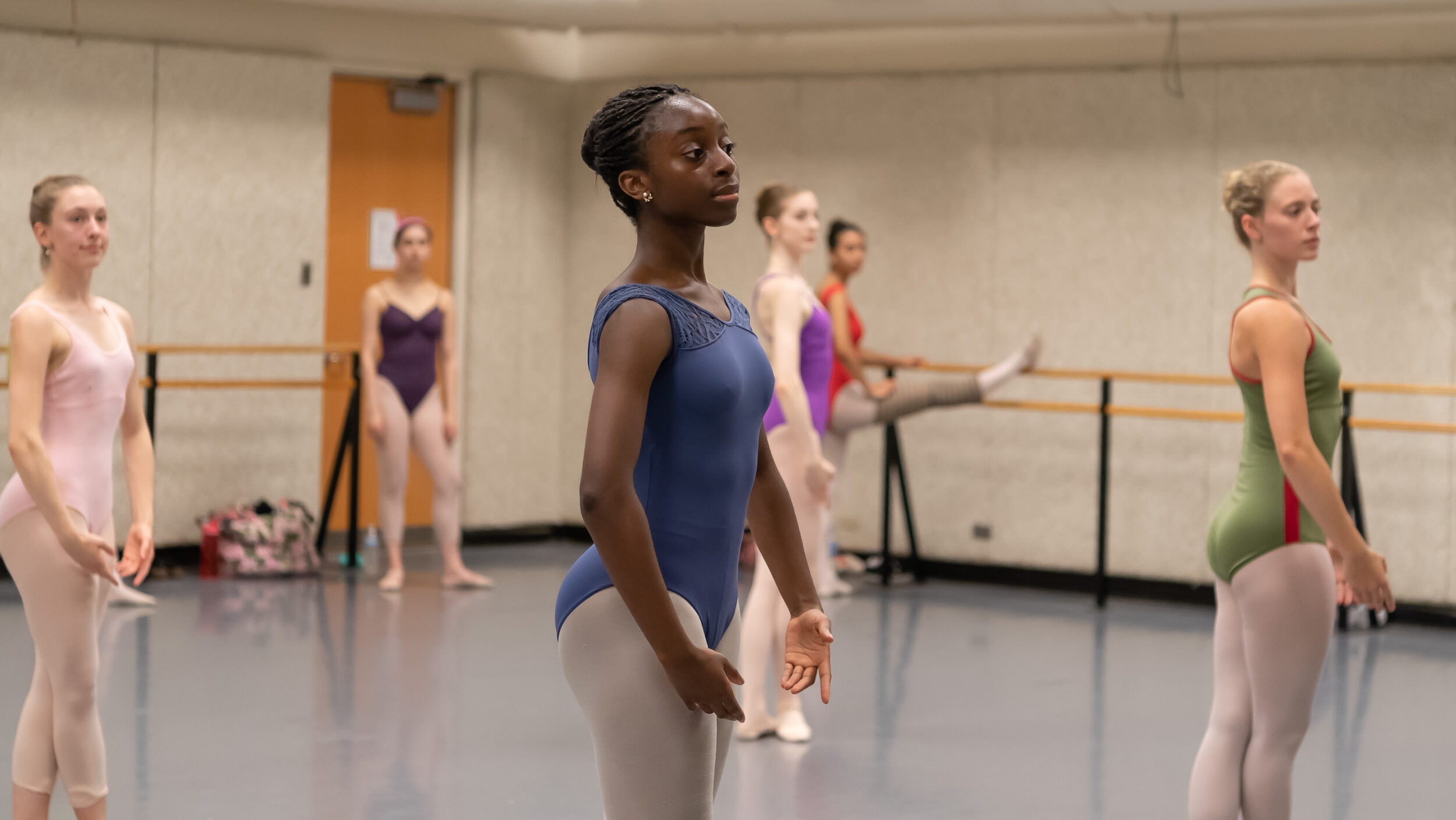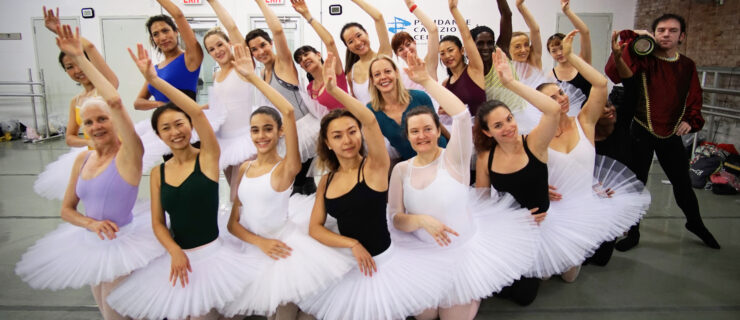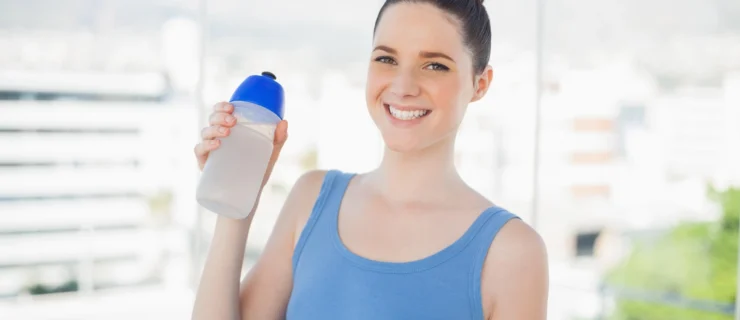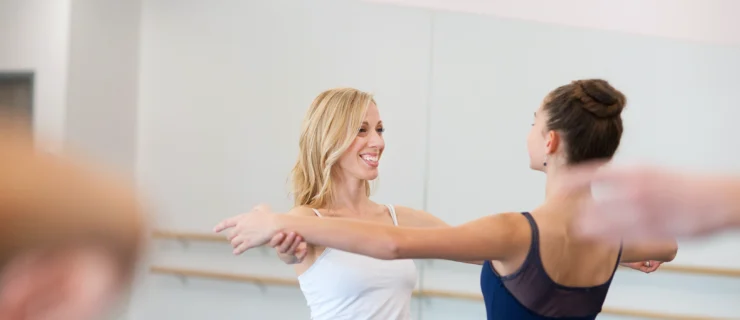Collegiate Intensives Fill a Gap for Young Adult Dancers
Last summer, Kirsten Smerud, then 20, had just finished a traineeship at BalletMet and was preparing to join Louisville Ballet’s Studio Company. She wanted to keep up with her training, but she found that she’d aged out of most summer intensives and would be older than the high-school-aged students taking classes at her home studio. She heard that Cincinnati Ballet offered a Collegiate Intensive for dancers 18 and up, and auditioned. “I was looking for something that was more tailored to older dancers who have already stepped foot in the professional world,” says Smerud, who at the time was also earning a degree in kinesiology at the University of Utah. “The Collegiate Intensive was a great fit.”
As the ballet company system has developed more trainee and second-company ranks over the past few decades, more dancers like Smerud are on a longer, more winding path from training to career. Whether they’re in the trainee and second-company pipeline, BFA ballet programs, or completing college degrees in topics outside of dance, these college-aged dancers are eager for a rigorous summer intensive experience—while treating them like adults. Cincinnati Ballet’s Collegiate Intensive is one of a growing number of programs cropping up to meet these dancers’ needs.
A Broader Curriculum
Having spent years witnessing American Ballet Theatre’s Collegiate Summer Intensive, former ABT artistic director Kevin McKenzie was eager to cater to the same demographic at Kaatsbaan, the residency center in Tivoli, New York, where he’s artistic advisor. This summer, Kaatsbaan Ballet Intensive is launching its first Collegiate Week for dancers between the ages of 18 and 25. “You’re not dealing with kids,” says McKenzie. “You’re dealing with people who have been trained and are entering that stage of critical thinking in their life.”
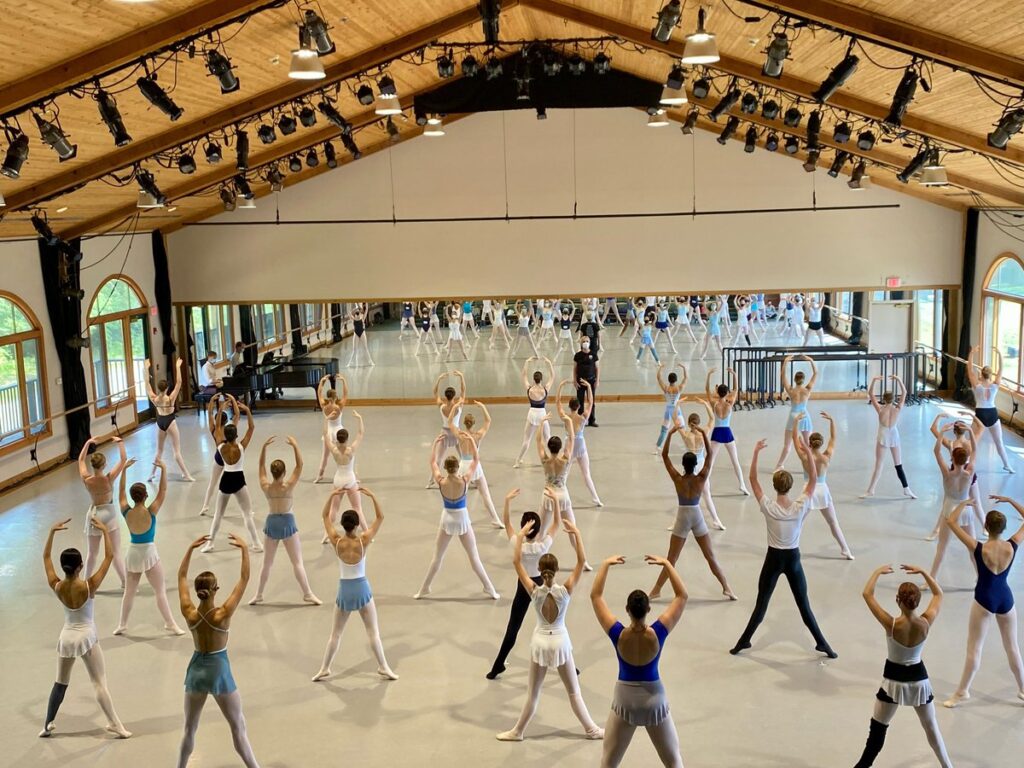
In line with Kaatsbaan’s mission to foster creativity, Collegiate Week will have an emphasis on composition, with choreographer Gemma Bond guiding students through a choreographic curriculum. Kaatsbaan’s program will balance this focus with classical technique. “You’ve got to study the classics so you can learn the rules, and when you know the rules, you can learn to break them,” adds McKenzie.
Cincinnati Ballet’s Collegiate Intensive is open to dancers 18 and up (the oldest registrant to date is 24) and offers three- and six-week options. It runs at the same time as Cincinnati Ballet’s Summer Intensive. What makes the Collegiate Intensive different is its emphasis on exposing dancers to a broader range of what the ballet world has to offer, including seminars on career pathways in dance. “We’re providing the same excellent faculty, the same opportunities,” says Blanca Huertas-Agnew, Cincinnati Ballet’s academy director. “We may go deeper in some areas—like improvisation, choreographic process, production, management—because we know that these students want to be challenged that way.”
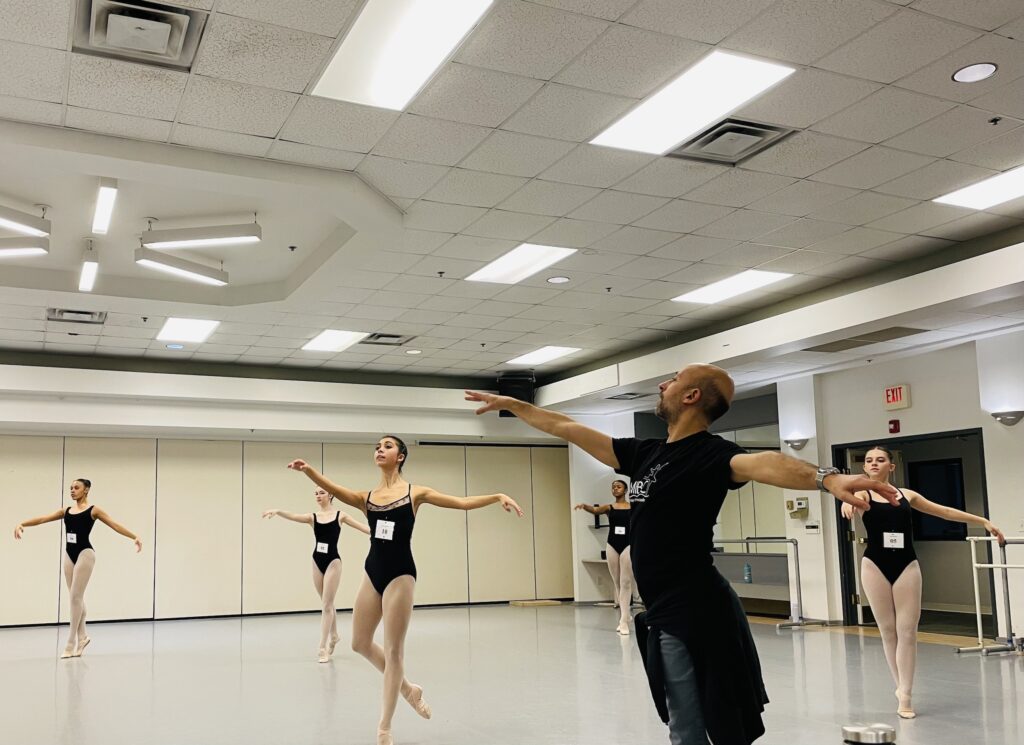
Florida Ballet’s Collegiate Summer Intensive is also running for the first time this summer. It was designed to accommodate Florida Ballet’s trainees and the BFA dance students enrolled at Jacksonville’s nearby universities. But Florida Ballet artistic director Roberto Forleo hopes it will also give students from out of state a chance to see what this fledgling company has to offer. The intensive, open to participants 18 and over, is attracting a range of dancers; the oldest registered participant is 26. In order to tailor the intensive’s curriculum, Forleo has added lectures in dance history, costume design, and technical direction. “I wanted to have broader programs, so not just dance,” he adds.
Providing More Independence
Like most standard summer intensives, many collegiate intensives are hosted in partnership with universities, providing dorms and a meal plan for dancers. While Kaatsbaan, Cincinnati Ballet, and Florida Ballet will provide resident assistants, the programs note that by virtue of their participants being over 18, they’re afforded much more freedom than younger dancers.
“We still want to keep them safe, but we have a variety of activities for them, showing them the arts in Cincinnati,” says Huertas-Agnew. At Kaatsbaan, students can walk into the nearby village of Tivoli, already a hub for students from nearby Bard College; the program will also offer lectures in the evenings.
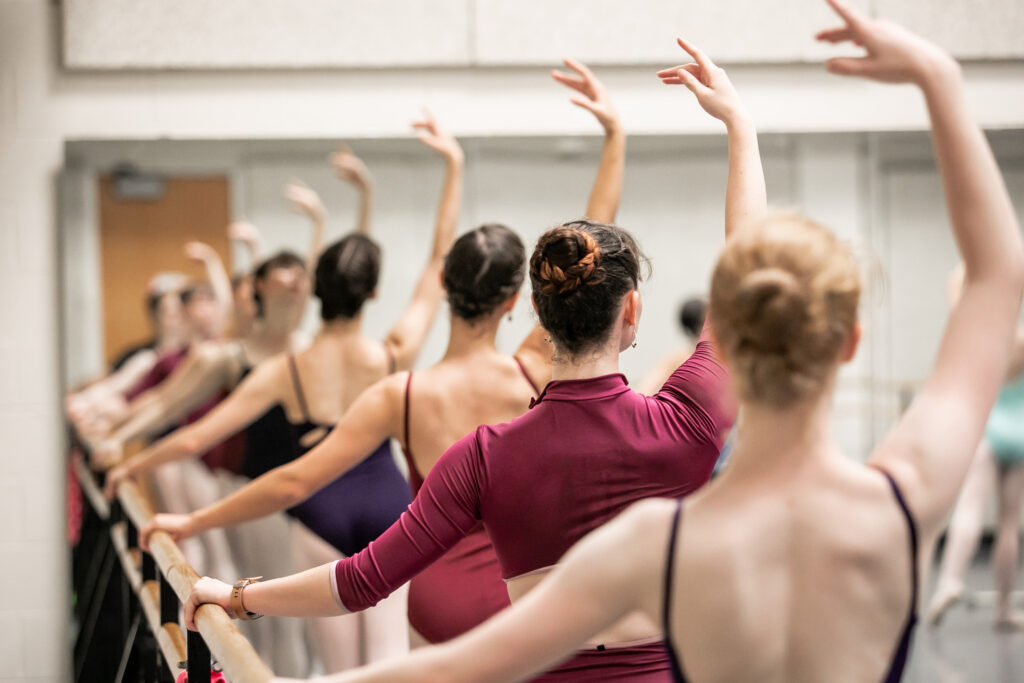
“We don’t have to have a chaperone for them,” adds Forleo of the dancers headed to Florida Ballet this summer. “They can take care of themselves.”
The Changing Face of Ballet Training
Smerud, who’s now going into her second year with Louisville Ballet’s Studio Company, still remembers how supportive Cincinnati Ballet’s Collegiate Intensive felt. “When you’re a younger dancer in the ballet world, it can be very competitive. But in the Collegiate Intensive, everybody was lifting each other up. It probably comes with the maturity of older dancers,” she says.
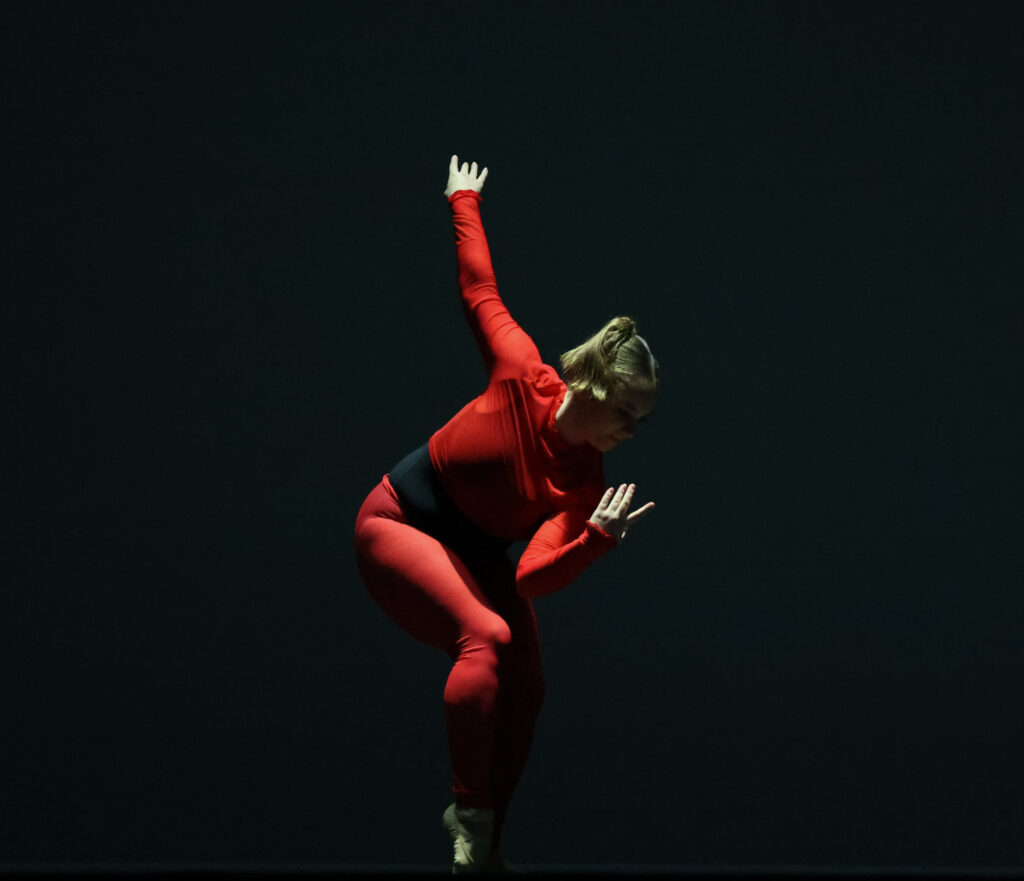
As the path to a professional contract grows longer, collegiate intensives are filling a gap for dancers and providing them with a well-rounded foundation. “It’s moving away from this idea that at 18, you need to know exactly what is going to happen with your dance career,” says Huertas-Agnew. “The summer intensive will give the opportunity to students to explore some of those pathways.”
